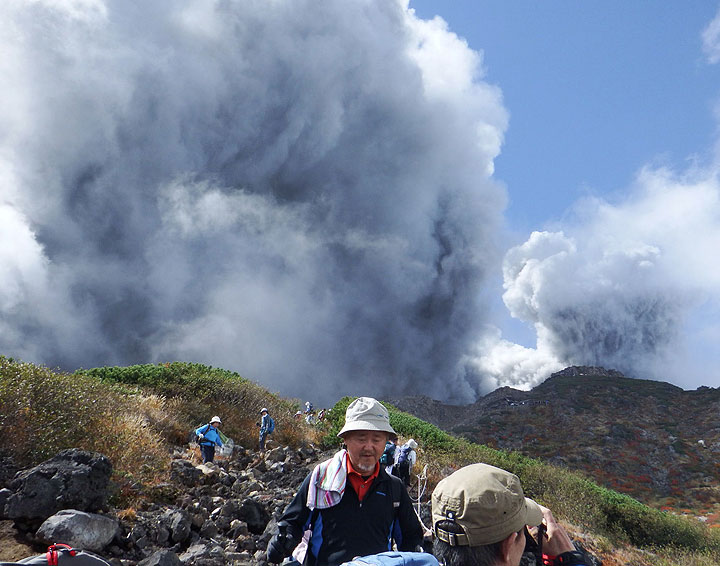Watch the video above: Amazing cellphone video of climbers fleeing eruption on Mount Ontake.

TORONTO – In a few terrifying moments, hikers on Japan’s Mount Ontake were fleeing for their lives as a sudden explosion of dust and steam soared into the sky.
There were no warnings. No shaking ground. Just terror.
How did this happen in an age with sophisticated volcano monitoring?
READ MORE: Bodies found on Japan volcano, raising toll to 48
John Ewert, the scientist-in-charge at the U.S. Geological Survey’s Cascades Volcano Observatory said that not all eruptions can be predicted by earthquakes, or seismic activity.
Typically, when volcanic eruptions of magma (it is called lava once it exits the volcano) occur, they involve the transport of material from deep below ground, triggering earthquakes.
IN PHOTOS: Powerful images as Japanese volcano Mount Ontake erupts
But Ontake’s eruption wasn’t the movement of magma: it was something called a phreatic explosion, which involves steam.
“Steam blasts are very difficult to foresee,” Ewert said.
These types of explosions — sometimes called hydrothermal explosions — occur when the heat balance changes in a shallow part of a volcano.
In the case of Ontake, it’s likely that a pathway opened up which allowed more heat to get to that shallow level. There, it interacted with the groundwater and then pressurized, breaking whatever was sealing the region, and releasing a steam blast.
“You can think of it like a steam boiler,” Ewert said. “You don’t typically see these coming because it’s a sudden release of pressure.”
- Gardeners need to watch out for these 2 worms in Ontario. Here’s why
- Satellite built by N.B. students not responding a week after entering Earth’s orbit
- T. Rex an intelligent tool-user and culture-builder? Not so fast, says new U of A research
- After raising a stink, trash cans to return to Montreal’s Lachine Canal
Ewert said that phreatic explosions aren’t unusual. In 1993, two volcanologists were killed at the Guagua Pichincha Volcano in Ecuador during such an eruption. Ontake has had previous phreatic explosions as have other active volcanoes like Mount St. Helens in the United States.
The effects of these explosions are typically very localized, Ewert said.
“Had this been in the middle of the night, or in some other season of the year, chances are — as has been the case in the past at Ontake — no one would’ve been around,” he said. “It’s kind of an unfortunate circumstance of really, a small volcanic event, occurring at the same time people were in the area the event was taking place.”

However, Ewert added that this particular explosion was “substantial.” There was plenty of debris and rock that rained down along the mountainside.
There had been no historical activity at Ontake until 1979, Ewert said, and the last phreatic activity was in 2007.
As for the future of Ontake, Ewert said, “I don’t know if there will be any more of these. This might be a one-off. Time will tell.”
There are 110 active volcanoes in Japan, 1,550 worldwide.


Comments